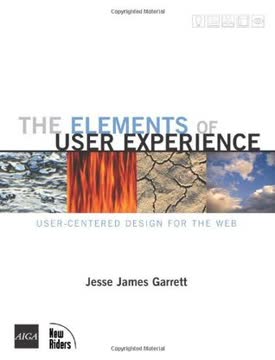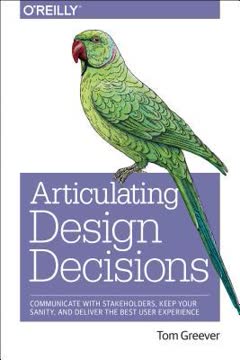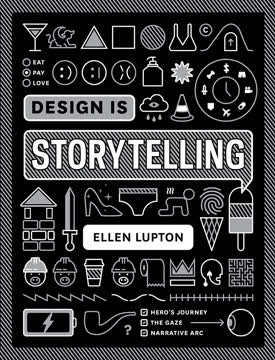Key Takeaways
1. Innovation is a disciplined process, not magic
Innovation is a discipline. It is not magic. It is something organizations can choose to practice, improve, and excel at.
Structured approach. Innovation can be managed and improved like any other organizational function. It requires a systematic process, repeatable methods, and disciplined execution. Organizations should develop clear frameworks, tools and metrics to guide innovation efforts.
Demystifying creativity. While creativity is important, successful innovation relies more on rigorous analysis, strategic thinking and diligent implementation. Ideas alone are not enough - they must be validated, refined and realized through a structured approach.
Continuous practice. Innovation capabilities are built over time through consistent application and learning. Organizations should create formal innovation programs, dedicate resources, and make it an ongoing priority to develop innovation as a core competency.
2. Build innovations around experiences, not just products
Experience can be defined as "the act of living through events."
Holistic view. Innovations should address the entire customer journey and experience, not just isolated touchpoints. Consider all interactions before, during and after product/service use.
Human-centered design. Start with deep understanding of user needs, motivations and pain points. Design solutions that create meaningful, seamless experiences.
Expanded scope. Look beyond core product features to innovate across the full spectrum of user interactions:
- Discovery and awareness
- Purchase and onboarding
- Usage and engagement
- Support and maintenance
- Upgrade and renewal
3. Think of innovations as systems, not isolated offerings
Innovations based on integrated innovation of multiple parts of a system are likely to have greater value, and tend to confer massive competitive advantage for the company creating them.
Interconnected elements. Innovations rarely exist in isolation. Consider how new offerings fit into and impact larger ecosystems of products, services, stakeholders and environments.
Synergistic design. Create integrated systems of innovations that reinforce and amplify each other's value. Look for opportunities to innovate across multiple touchpoints.
Ecosystem thinking. Map out all the players and relationships in the broader system. Identify opportunities to create value for multiple stakeholders simultaneously.
4. Cultivate an innovation culture across the organization
Successful innovation can and should be planned and managed like any other organizational function.
Organizational mindset. Foster a culture where innovation is everyone's responsibility, not just R&D. Encourage creativity, experimentation and calculated risk-taking at all levels.
Leadership commitment. Innovation must be championed from the top. Leaders should articulate a clear innovation vision, allocate resources, and reward innovative efforts.
Collaborative approach. Break down silos and create cross-functional innovation teams. Leverage diverse perspectives and expertise from across the organization.
5. Use a structured innovation process with distinct modes
The design innovation process moves back and forth through modes of activity, oscillating between poles of Real versus Abstract and Understanding versus Making.
Seven modes. The structured innovation process consists of distinct modes:
- Sense Intent
- Know Context
- Know People
- Frame Insights
- Explore Concepts
- Frame Solutions
- Realize Offerings
Iterative nature. The process is nonlinear and iterative. Teams may cycle through modes multiple times, with insights from later stages informing earlier ones.
Balancing perspectives. The process oscillates between abstract thinking and real-world understanding, as well as between analysis and synthesis. This balance drives holistic innovation.
6. Frame insights to drive concept exploration
Just as looking to the past helps understand the present, learning about the latest offers glimpses of possible future.
Synthesizing research. Distill key learnings from contextual and user research into clear, actionable insights. Look for meaningful patterns and "aha moments."
Creating frameworks. Develop visual models and frameworks to structure insights and guide ideation. Examples include:
- User journey maps
- Ecosystem diagrams
- Design principles
Reframing problems. Use insights to reframe the innovation challenge in new ways. Question assumptions and look at the problem from fresh perspectives.
7. Explore concepts broadly before narrowing solutions
The mindset for Explore Concepts is to be creative and open to new, perhaps radical ideas and ways of thinking; but at the same time, keeping sight of human-centered and context-driven principles for success that were identified in earlier modes.
Divergent thinking. Generate a wide range of concepts without judgment. Use techniques like brainstorming, analogical thinking, and "what if" scenarios to spark creativity.
Concept evaluation. Systematically evaluate concepts against user needs, business goals and technical feasibility. Use methods like concept scoring matrices.
Concept synthesis. Combine and build on promising concepts to create integrated solution systems. Look for synergies between different ideas.
8. Prototype and test solutions iteratively
Turning our concepts and solutions into reality requires iterations of prototyping and evaluating until the value an offering brings to the real world can be demonstrated.
Building to learn. Create rapid, low-fidelity prototypes to test core assumptions and gather user feedback early. Iterate based on learnings.
Increasing fidelity. Progressively refine prototypes, adding more detail and functionality with each iteration. Move from paper sketches to digital mockups to working prototypes.
Real-world testing. Test prototypes in realistic contexts with actual users. Observe behavior, gather feedback, and identify areas for improvement.
9. Plan strategically for implementation and scaling
Communicating Vision mindset is really about leadership. It is about giving consideration to how everyone involved in implementation can embrace the ideas as his or her own.
Strategic roadmap. Develop a clear roadmap for implementing innovations over time. Consider short-term quick wins and long-term transformative changes.
Resource planning. Identify the people, skills, technologies and partnerships needed to realize innovations. Build or acquire necessary capabilities.
Change management. Plan for organizational and cultural changes required to support new innovations. Communicate vision and build buy-in across stakeholders.
Scaling strategy. Consider how successful pilots can be scaled across the organization or to new markets. Plan for operational and infrastructure needs.
读累了记得休息一会哦~
公众号:古德猫宁李
电子书搜索下载
书单分享
书友学习交流
网站:沉金书屋 https://www.chenjin5.com
电子书搜索下载
电子书打包资源分享
学习资源分享
Last updated:
FAQ
What's 101 Design Methods about?
- Structured Innovation Approach: 101 Design Methods by Vijay Kumar provides a structured framework for driving innovation within organizations, focusing on design methods to achieve successful outcomes.
- Seven Modes of Innovation: The book outlines a design innovation process consisting of seven modes: Sense Intent, Know Context, Know People, Frame Insights, Explore Concepts, Frame Solutions, and Realize Offerings.
- Practical Methods: Each mode is supported by practical methods and tools applicable to real-world innovation challenges, making it a comprehensive guide for practitioners.
Why should I read 101 Design Methods?
- Enhance Innovation Skills: The book equips readers with a variety of design methods to enhance their ability to innovate effectively within their organizations.
- Real-World Applications: It includes numerous examples and case studies illustrating successful application of these methods in various contexts.
- Framework for Success: Provides a clear framework for understanding and implementing innovation processes, valuable for both beginners and experienced professionals.
What are the key takeaways of 101 Design Methods?
- Four Core Principles: Emphasizes building innovations around experiences, thinking of innovations as systems, cultivating an innovation culture, and adopting a disciplined innovation process.
- Iterative and Nonlinear Process: Highlights that the design innovation process is iterative and nonlinear, allowing for flexibility and adaptation as new insights are gained.
- Diverse Methods: Introduces over 100 specific methods that can be utilized throughout the innovation process, providing a toolkit for tackling various challenges.
What are the best quotes from 101 Design Methods and what do they mean?
- "Innovation is a viable offering...": Emphasizes that innovation must be relevant and valuable to both users and providers, encapsulating the essence of innovation.
- "The practice of innovation needs...": Highlights the importance of treating innovation as a discipline requiring skill and practice, rather than a random occurrence.
- "Design is not just what it looks like...": Stresses that effective design must function well and meet user needs, highlighting the importance of usability.
What are the seven modes of the design innovation process in 101 Design Methods?
- Sense Intent: Focuses on identifying where to innovate by understanding trends and changes in the environment.
- Know Context: Involves studying the context in which innovations will exist, including market dynamics and stakeholder relationships.
- Know People: Emphasizes understanding users through empathy and observation to uncover their needs and behaviors.
- Frame Insights: Analyzes collected data to extract meaningful insights that can guide the innovation process.
- Explore Concepts: Involves generating and refining ideas based on insights gathered from previous modes.
- Frame Solutions: Focuses on developing and evaluating potential solutions that address identified needs and insights.
- Realize Offerings: Implements and tests the developed solutions in real-world contexts.
How does 101 Design Methods define innovation?
- Viable Offering: Innovation is defined as a viable offering that is new to a specific context and time, creating value for both users and providers.
- User-Centric Focus: Emphasizes the importance of understanding user needs and experiences in the innovation process.
- Contextual Relevance: Highlights that innovation must be relevant to the current market and societal conditions to be successful.
What methods are included in the Sense Intent mode?
- Buzz Reports: Involves collecting and sharing information about the latest trends and developments from various sources to inspire innovation.
- Trends Expert Interview: Engaging with experts to gain insights into emerging trends and their implications for innovation.
- Initial Opportunity Map: A visual tool to identify potential areas for innovation based on current trends and user needs.
How can I apply the methods from 101 Design Methods in my organization?
- Start with the Modes: Begin by understanding the seven modes of the design innovation process and identify which mode aligns with your current project needs.
- Select Appropriate Methods: Choose specific methods from each mode that fit your organizational context and the challenges you are facing.
- Iterate and Adapt: Use the iterative nature of the process to refine your approach based on feedback and insights gained throughout the innovation journey.
What is the importance of cultivating an innovation culture as discussed in 101 Design Methods?
- Engagement Across Levels: Encourages engagement from all levels of the organization, fostering a collaborative environment for idea generation.
- Sustained Innovation: Leads to sustained efforts in developing new ideas and solutions, rather than sporadic attempts.
- Adaptability and Resilience: Organizations with a robust innovation culture are better equipped to adapt to changes in the market and respond to emerging challenges.
What are some specific methods discussed in 101 Design Methods?
- Symmetric Clustering Matrix: Analyzes relationships among entities based on their similarities, helping identify clusters of related concepts.
- Asymmetric Clustering Matrix: Compares two sets of entities to understand interactions between different user needs and contexts.
- User Journey Map: Visualizes the steps users take through an experience, highlighting pain points and opportunities for improvement.
How does the Symmetric Clustering Matrix work?
- List Entities: Start by listing the entities you want to compare based on research findings, ensuring consistency in abstraction levels.
- Determine Relationships: Assess the similarity between entities and score their relationships on a scale to visualize relatedness.
- Create a Matrix: Construct a symmetric matrix with entities on both axes, using relationship scores to identify clusters.
What is the purpose of the User Journey Map?
- Visualize User Experience: Breaks down the user experience into specific activities and stages, aiding in identifying pain points.
- Cluster Activities: Groups related activities into higher-level categories for easier analysis of user behavior and interactions.
- Highlight Insights: Captures insights that inform design decisions, leading to more user-centered solutions.
Review Summary
101 Design Methods receives mixed reviews. Some praise it as a valuable resource for designers, offering a structured approach to innovation. Critics argue it lacks depth, contains obvious methods, and is repetitive. Positive reviewers appreciate its practical tools and quick reference format. Negative reviews cite excessive jargon, lack of scientific evidence, and similarity to basic research techniques. Overall, the book is seen as potentially useful for beginners or as a reference, but may disappoint experienced practitioners seeking novel insights or rigorous methodologies.
Similar Books










Download PDF
Download EPUB
.epub digital book format is ideal for reading ebooks on phones, tablets, and e-readers.




